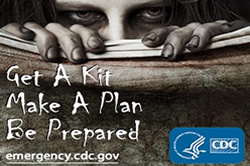May 27th, 2011 by BarbaraFicarraRN in Health Tips, Opinion
No Comments »


Social networking allows doctors, nurses and other health professionals to deeply connect and engage with the community and their colleagues.
“We are standing at the precipice of a new online revolution in health care. As more and more health experts embrace the Internet and increase their social media activity, health information seekers will undoubtedly benefit in profound ways.” [Source: Mashable]
Dynamic health and medical professionals engaged in social networking, using Twitter, Facebook, Blogs and YouTube are on the front-line of new modern medicine.
Today’s modern medicine is all about the patient. Participating, partnering and developing a professional relationship is paramount.
While many health consumers are searching the web for support, reassurance and specific health news and information; doctors and nurses continue to question the value of the internet for patients.
Social networking sites such as Twitter, Facebook, and Blogs are not a waste of time for health professionals because it offers value.
Social networking sites and blogs are a powerful and phenomenal platform to educate patients, raise awareness of health issues and it offers a forum to collaborate and connect. It gives a voice to patients and it allows for the conversation to get started with their doctors and other health care professionals.
Doctors, nurses and other health professionals can help validate what is important for patients.
3 reasons why social networking is not a waste of time Read more »
*This blog post was originally published at Health in 30*
May 26th, 2011 by Bryan Vartabedian, M.D. in Health Policy, Humor
No Comments »

 This is good. I knew the CDC was socially tuned-in but this came as a surprise: Preparedness 101: Zombie Apocalypse . It’s every American’s guide to dealing with a zombie attack. You come thinking zombies but take away principles for emergency preparedness. Well done, CDC.
This is good. I knew the CDC was socially tuned-in but this came as a surprise: Preparedness 101: Zombie Apocalypse . It’s every American’s guide to dealing with a zombie attack. You come thinking zombies but take away principles for emergency preparedness. Well done, CDC.
The real take away for those of us looking under the hood: effective health messaging should be creative and fun. While we’ll never be able to measure the true effectiveness of this approach in an emergency, expect the post’s massive traffic to convert important links on emergency preparedness. Hopefully the CDC will release stats on the effectiveness of this campaign.
I’d like to write more, but I’m goin’ to make my kit.
*This blog post was originally published at 33 Charts*
April 11th, 2011 by Nicholas Genes, M.D., Ph.D. in Medical Art, Opinion
No Comments »

I made my first PowerPoint presentation in 1997, and actually used Microsoft’s application to prepare 35mm Kodachrome slides for a carousel projector. Since then, I’ve seen thousands of PowerPoint presentations (and a few dozen Keynotes), and had a hand in creating many, myself.
Not since a conference a decade ago have I needed to make Kodachrome slides. Yet almost everyone still uses software built around printing slides, making a linear progression of topics. The impact of this format on human thought is substantial — PowerPoint was fingered as contributing to the Columbia disaster and has spawned a lot of discussion and linkage, even here, regarding effective communication (probably all conceived of during dull PowerPoint presentations).
While compelling presentations are possible with Powerpoint (using the Lessig Method, for example) those kinds of talks require planning, and a mastery of the material. And some great stock photos. My experience in school and training is that the PowerPoint is often made as the presenter is learning the content and so is bound to lack the organization and expertise necessary for a Lessig-style presentation. People procrastinate about public speaking, and when crunch time comes it’s just too easy to flip through a a textbook, call up a Pubmed abstract, and churn out another verbose PowerPoint slide. With practice, it’s possible to whittle down the number of words and bullets per slide — but who has time for that? Much easier to read the talk from the slide itself. Read more »
*This blog post was originally published at Blogborygmi*















